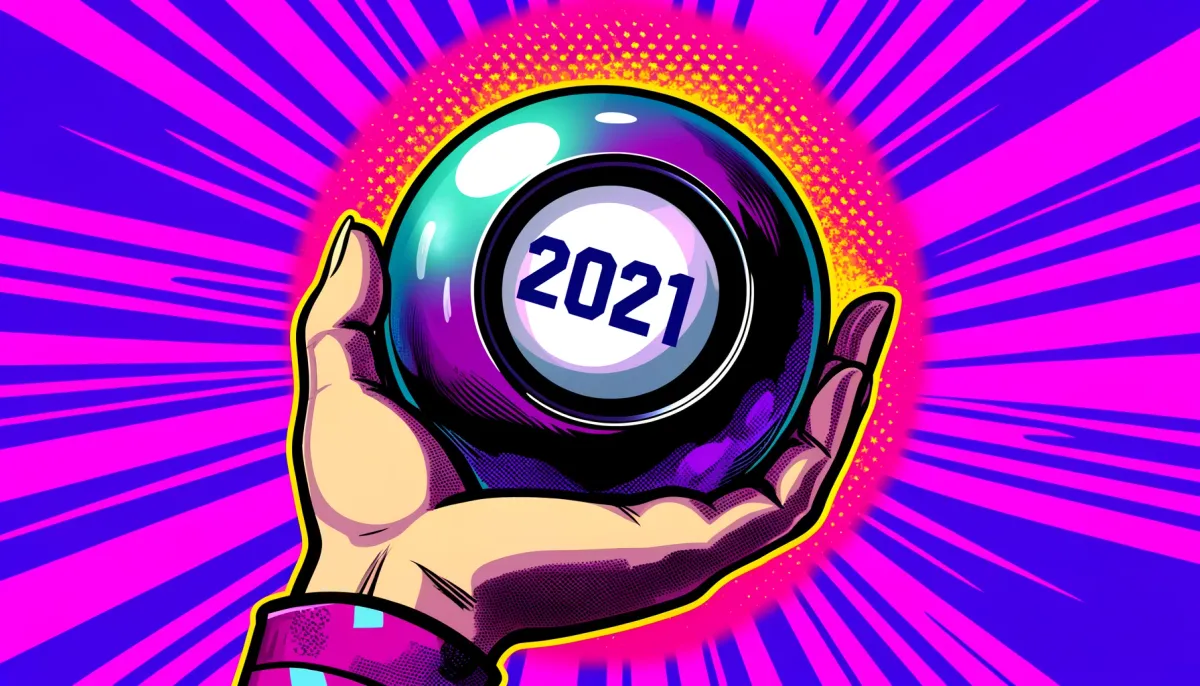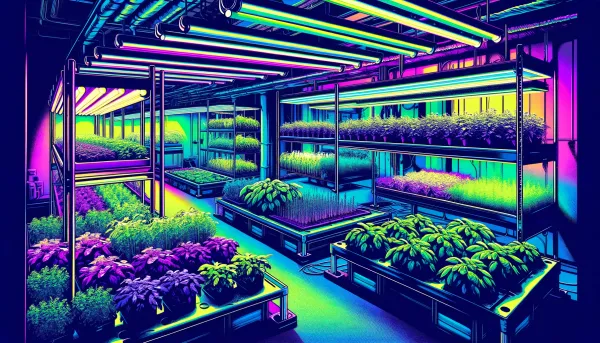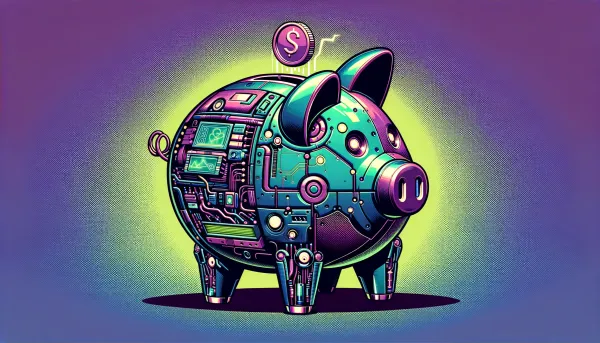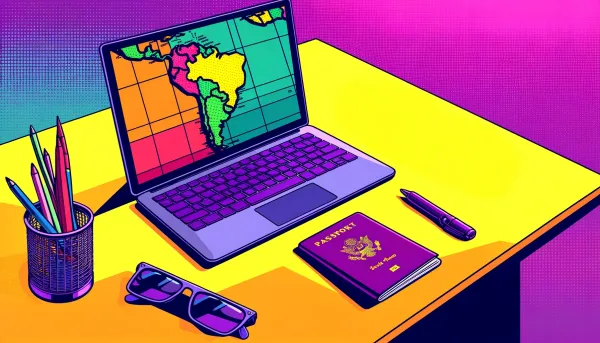Beyond 2020: The Great Bifurcation
Recessions tend to be levellers, but the events of 2020 were perverse: Those already well-off gained in the chaos. The widening wealth inequality gap presents stark scenarios for how the future will play out.

Events of 2020 accentuated and then exacerbated mass economic imbalances present in the world. The uniform levelling effect expected from the one-two punch of a pandemic and recession did not occur; instead, the well-off faired well, while the less fortunate suffered.
Heading into 2021, the clear bifurcation between 2020's winners and losers will define what happens next.
To help gather thoughts about the year ahead, here are a collection of themes from the following areas:
- Public Stock Markets
- Big Business
- Tech and Venture Capital
- Life and Society
But first, let's understand why inequality has increased and how its end game might play out.
The Great Bifurcation
As developed countries moved towards tertiary, knowledge-based economies in the 1980s, those with the requisite skills saw wealth generation accelerate. Through leveraging IT for work, output increased exponentially, which corresponded in the flywheel of higher earning power and capital. Being early adopters to tech also brought informational advantages, helping skills and knowledge level up faster than others.
With output limited by the more linear constraints of time and human anatomy, manual workers' wealth gap relative to the knowledge economy has since continually grown in size.
Changes in Real Wage Levels of Full-Time Male U.S Workers by Education: 1963 - 2012
When the shift became apparent in the 1990s, faced with stick or twist, western governments chose the former, propping up inefficient industries like steel and car production, justified under auspices of strategic importance, despite flimsy economic rationale. Imagine if, instead, mass labour retaining had occurred, perhaps the wealth gap would be lesser now?
COVID-19's effects favoured the knowledge sector, which harnessed prior gains of flexibility and wealth to buttress the shock, then adapt and thrive. White-collar workers ended 2020 with the perverse situation of increased bank balances and work-life harmony, despite the prevailing world chaos.
At the other end of the scale, manual workers endured more hardships by having less flexibility from diminished labour agency. Disintermediated marketplace structures and zero-hours contracts have contributed to the increased commoditisation and reduced bargaining power of low-skilled labour.
The End Game
Moving forward, the end game for the bifurcation seems bleak. On one side, the situation perpetuates, and the chasm between haves and have-nots manifests more physically, via a gated community mentality. Conversely in terms of resolving the gap, either eventually a leftist uprising happens and expropriations occur, or extreme measures like wealth taxes become unavoidable.
Sandwiched in the middle, we have the awkward question of how long money printing can go on for and whether it ends with a cataclysm of debt forgiveness somewhere down the line.
1) Public Markets in 2021: Growth Stocks Continue, and Commodity Inflation Drives Value
2021 will bring more of the same for public markets, driven by stimulus and the lack of viable alternatives for investors and savers. Inflation anxiety, hope, FOMO and zero interest rates all ingredients behind the rise. Yet, no one knows if we currently gaze up at a reincarnation of the 1989 Nikkei 225, or new asset allocation frontiers opened up by the end of the fixed income bull market.
Japan's Nikkei 225 Index and Annual Inflation: 1985 - 2020
Zero interest rates will remain for a generation. Japan, once seen as an outlier, is now a reference point for all. There are fears that inflation will emerge with a vengeance in 2021, but as Japan proved, that is easier said than done. Inflation will occur, but primarily in basic materials, its effect tapered by downward pressure on labour costs from technology pressure, labour imports and diminished union effects. Bitcoin, recently rebranded as an inflation hedge, will continue surging, but then suffer a familiar pullback. Prominent 2020 Bitcoin allocations by Ruffer and MicroStrategy highlight its growing acceptance from institutions.
Logical sentiment suggests that stock returns will normalise in 2021 and impaired sectors like travel, banks and energy will pare losses and catch up with tech.
I find the recovery view too optimistic and ignorant to the potentially permanent contraction of underlying market sizes. Encumbered by existing operational issues, the sectors face a strategic checkmate, hamstrung in the ability to exploit new opportunities. Doing so may cannibalise existing revenue streams or exhaust resources on the pivot chasm. For industries that can be shut down on a whim, or in the case of banks, ordered to disperse bailout loans, the degree of surrogacy offered to governments for directing fortunes will forever remain on cautious investors' minds.
Instead, you will see private equity firms and better-equipped (i.e. cash-rich and fixed asset-light) public market companies pick impaired companies apart and start with a clean slate. IPOs and SPACs will continue to arbitrage their respective optimism and regulatory opportunities.
Interesting Markets in 2021
Agricultural Commodities and Equities
Basic material costs will surge due to supply chain disruptions (freight costs doubled last year) and the subsequent race to domesticate them. Such splintering confounds the scaling law of comparative advantage, leading to price hikes.
Diversified Miners
As a leveraged play on gold prices rising, with a hedge angle towards precious metals used in batteries, miners represent a better play on value than the broader recovery play.
Infrastructure
The combination of government stimulus to kick start economies and a continual clean energy shift will boost infrastructure.
Homebuilders
The behavioural shift away from cities, and a desire for space requires density, all benefits to homebuilders. Suburbia 1.0 will reimagine through commuter-belt micro-communities with more room at hand and the trappings of urban life.
Asia-Pacific and Emerging Markets
Asia Pacific's culture of technocratic governance has helped it shine throughout the pandemic. The Belt and Road Initiative will manifest in more integrated supply chain systems that will, over the next decade, ascend the network's prominence past that of the European Union.
Dollar weakness will assist debt load concerns of other emerging market countries, the commodity rally furthering domestic fortunes.
Biotech and Healthcare
Both sectors had a tear in 2020 driven by hope, but ongoing fortunes will be more realistic. Consumer and government focus on health and wellness will become a longer-term trend. The case study of rapid vaccine development will inspire increased interest in biotech investing.
Real ESG
Real ESG is the story stock of 2021; retail investors want to buy into visions of sustainability. Rewards will go to the genuinely transformative strategies, while those massaging the narrative to try and fit in, will be found out.
2) Big Business in 2021: The Storm After the Calm
2020 seemed like a dreamland for white-collar workers in large corporates. Bosses accommodated home working by embracing flexible working hours, kitting out homes with Aeron chairs and besieging doorsteps with hampers.
Is this the calm before the storm? 2020 was a petri dish for corporate planners, who will use results to wield change in 2021. The results of working from home may highlight extreme inefficiencies in working patterns and output, and when national sentiment allows (i.e. furloughs end), there will be drastic restructurings and redundancies. Bosses hold a mulligan to wield radical change that would not be otherwise publicly justifiable under benign economic conditions.
In recent years, the "trade wars" populous rhetoric pointed towards a wind change from offshoring to onshoring. The great work-from-home experiment will curtail this as many large companies analyse findings and ponder whether they need to pay London wages for location-agnostic output.
Corporate survivors will comprise those who demonstrate more malleable ability, favouring the younger and ambitious. Companies will experiment with more significant quantities of outsourced remote work, either through the modern gig economy manner or as a continuation of the old playbook of outsourced facilities in Asia.
The great levelling of working from home will also lead to gradual dislocation from using marquee brand service providers. Big consulting is facing a precipice and should expect to lose large mandates from clients dissatisfied with disorganised remote output that lacks the gloss of in-person delivery. The validation of remote working will help small businesses and solo entrepreneurs fill gaps with more specialist, cost-effective and reactive output.
3) Tech and Venture Capital in 2021
Venture Capital: Next Generation Portfolios and Remote Dispersion
2020 brought favourable conditions to the venture capital ecosystem. Tech-centric and variable cost-based business models of portfolio companies proved more defensive to the change agents at play. Euphoria in public markets and infused liquidity searching for yield also opened doors for exits and capital raises, respectively.
VC-backed IPOs in the US: 2010 - 2020
2021 will usher in housekeeping duties, with an increased emphasis on portfolio management. Opportunistic IPO conditions have curtailed previous strategies of holding long-term in private markets. With decks clearing of successful companies, attention will switch towards preening portfolios and harvesting the next generation. There will be consolidations and many acquihire-type combinations of companies with diminished fortunes. You can also expect more investing attention on the prevailing macro themes.
The Stay at Home Economy
- Smart home and work/life furnishings: More time at home = Spending more on the home
- Marie Kondo tech: More time at home = Getting more out of the home
- Entertainment options: More time at home = Finding more to do at home
- Health, wellness and diagnostics: For obvious reasons
Collaborative Software
- Whiteboards and asynchronous work patterns
- Education for working remotely
- Immersive meeting technology
- Teambuilding, feedback and water-cooler moment software
Creative/Hustle Economies
Many are starting micro-businesses through choice or lack of alternative, which will foster a whole stack of services to cover needs.
- Substack-style all-in-one packages
- Self-employment SaaS
Clean Technology and Sustainability
- Carbon sequestration techniques
- Vertical gardens
- Local sourcing
Esports
A long-term trend that can expect to see more crossover elements between fitness and gaming: Look at the success of Zwift.
Lockdowns have served to help VCs discover more efficient operational models. Zoom pitching and Twitter parapets, if anything, help level playing fields and move things quicker for adept investors. The pivot to remote highlights the strengths of micro VC models, which always leveraged such hacks.
Themes of the NYC and SF exodus will play out insomuch as firms become more distributed and choose remote-first business models. The hunter-gatherer mentality of a distributed firm model will also give rise to successful individuals (and their brands) going out alone to raise solo funds.
Technology: Tackling the Three Big Remaining Sectors
Big Tech will continue to record impressive gains. Those calling an end to its bull market or a chastising from regulators ignore two critical points central to its ascension. Firstly, big technology's ethos is continuous evolution and expansion: Yes, once Amazon was just a book store and Apple on the verge of bankruptcy. Secondly, technology companies seemly always appear faster and smarter than governments, slowly morphing into microstates and running rings with regulatory capture.
For the technology industry, attention will focus on the big micro and macro themes emerging. With regards to the former, a whole new subset of what seemed like "defined" mature sectors now have new angles:
- Teleconferencing
- Collaborative work
- Health and wellness
On the macro scale, the three big supersectors yet to be significantly disrupted are appearing in crosshairs.
- Healthcare. 2020 served as an MVP for telemedicine, in that people will use it, and it can be a more enjoyable experience than visiting a doctor. Amazon's moves look ominous and a sign of validation.
- Education. University business models look shaky, with short-term money-grabbing efforts eroding goodwill. Innovation efforts will improve remote education delivery and scaling up the nascent retraining (coding camp) and income share agreement sectors.
- Government. Newsflash: Elected politicians do not instantly possess project management discipline. The track and trace collaborations between business and governments demonstrate a future model for outsourcing government services.
In terms of sectors running out of favour, marketplaces have increasingly developed toxic vibes. Regulatory attempts, such as in California, seem like holes in buckets, as marketplaces invariably find loopholes to evade responsibility. Overriding sentiment to marketplaces appears exhausted. Look at Uber three years ago; taking over the world with flying cars, now it's another tired and old ride-hailing app.
Here are some predictions for big tech companies in 2021:
- Tesla does something splashy to acquire supply chain infrastructure or autonomous IP.
- Netflix does not move into podcasts but does experiment with high-quality user-generated content.
- Apple double-downs on fitness. Peloton seems like the obvious fit, but Apple requires a device brand, not software or customers necessarily.
- Salesforce continues to build a competing office suite alternative to Microsoft and Google. New wave productivity software companies, like Notion or Airtable, will be takeover targets.
- LinkedIn (or a consulting firm) experiments with using gig economy functionality for job postings.
- Zoom makes horizontal moves into the events space (e.g., Hopin). It builds out its Zapps marketplace, following a similar playbook taken by Salesforce's ecosystem.
- Facebook lands on collaborate office working as its non-gaming beachhead for VR and Oculus.
4) Life and Society: Quality Over Quantity
Who knows whether life will return to the paradigms defined as 2019 normal? It's hard to believe that trains, planes, offices and stadiums will be packed again, in an unconstrained manner. Yet in the same way that post-2001 airport security felt abnormal at the time, eventually, new becomes the norm, and we question prior complacency.
On a high level, I can predict that the serendipity that we relied on the physical world for will increasingly become more digital. Everything will slow down, be it chasing stamps in passports, bucket list ticking, or packed social diaries. The overarching theme will become quality over quantity.
When talking about life in 2021, I think cities provide the best area of focus. The great migration from rural to urban has continued unabated for 150 years in developed countries. Aside from the buffering advent of suburbia, did we see an end coming? Most likely, not. Yet, the signs are there: Turns out studio flats in Canary Wharf are not the future.
Expected changes in cityscapes will provide some form of levelling effect. Unused office stock will stack up, providing opportunities for repurposing as accommodation. Shared living situations could be a beneficial recipient, as an antidote to the existing option of cramming into refashioned family units.
For redundant office spaces in prime city areas, repurposing them into a hybrid shared-living-meets-university-dormitory form could provide affordable accommodation with the barbell of privacy/hygiene and social outlets. Bringing people back into cities in this way may help areas regenerate, especially given that most young people seem to want to work in offices for social and professional opportunities.
Coworking will eventually thrive, as companies look for options for more flexibility. Perhaps WeWork may have its renaissance?
Travel becomes the new weapon of countries to broker trade and reciprocity. Travel restrictions have brought benefits to developed countries through encouraging internal tourism and reducing spend slippage to abroad. How does a tourist hotspot like Australia survive with seemingly indefinite closed borders? As an already wealthy nation, it serves to force local tourism and its balance of payments up.
Tit-for-tat rules on entry will prevail, and visa wars will become a trade negotiation tool. Vaccine virtue signalling also becomes the norm, furthering the theme of society bifurcating.
Other Points
- Car ownership rises. The higher savings balances of upper classes and considerations towards social distancing and claustrophobia will result in a boom in car sales, especially electric ones.
- The butterfly effect of education failings becomes a social study for a generation. University applications will fall as 18-year-olds consider the diminished value on offer. Trade skills apprenticeship paths re-emerge, and increasing numbers opt to start businesses with the University of Life as their textbook.
- Local authority finances require restructuring. Pressures on councils in residential areas serving increasingly present dwellers leads to a budget crisis. Resulting solutions come in the form of delivery taxes and a rethinking of council tax band tests.
An Optimistic Endnote
I debated whether to write this, as there is always a deluge of annual predictions, most getting buried, or not held accountable. My reasoning was to help get my mind centred on what is going on.
However, on a bright note to end, one other end game from this is that technology could be the great deflator. I note agriculture as a potential source of inflation, but what if concepts like lab-grown meat becomes a feasible reality and food prices fall from reduced marginal costs?
When you see how great minds can come together to create a vaccine in record time, you wonder if those from a tech background will similarly look to solve world problems, instead of improved click through rates. In such a future where inflation stays low, perhaps the rising tide lifts all living standards?




